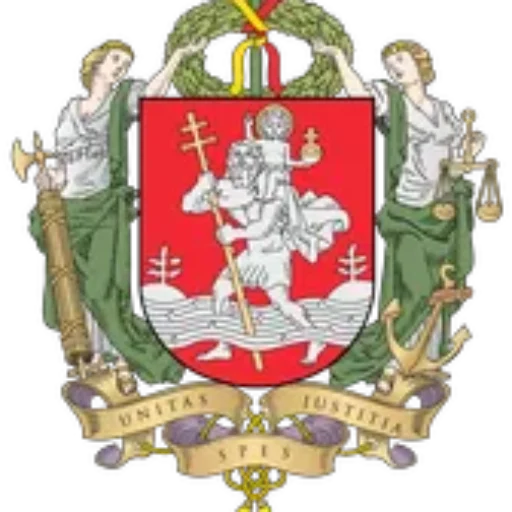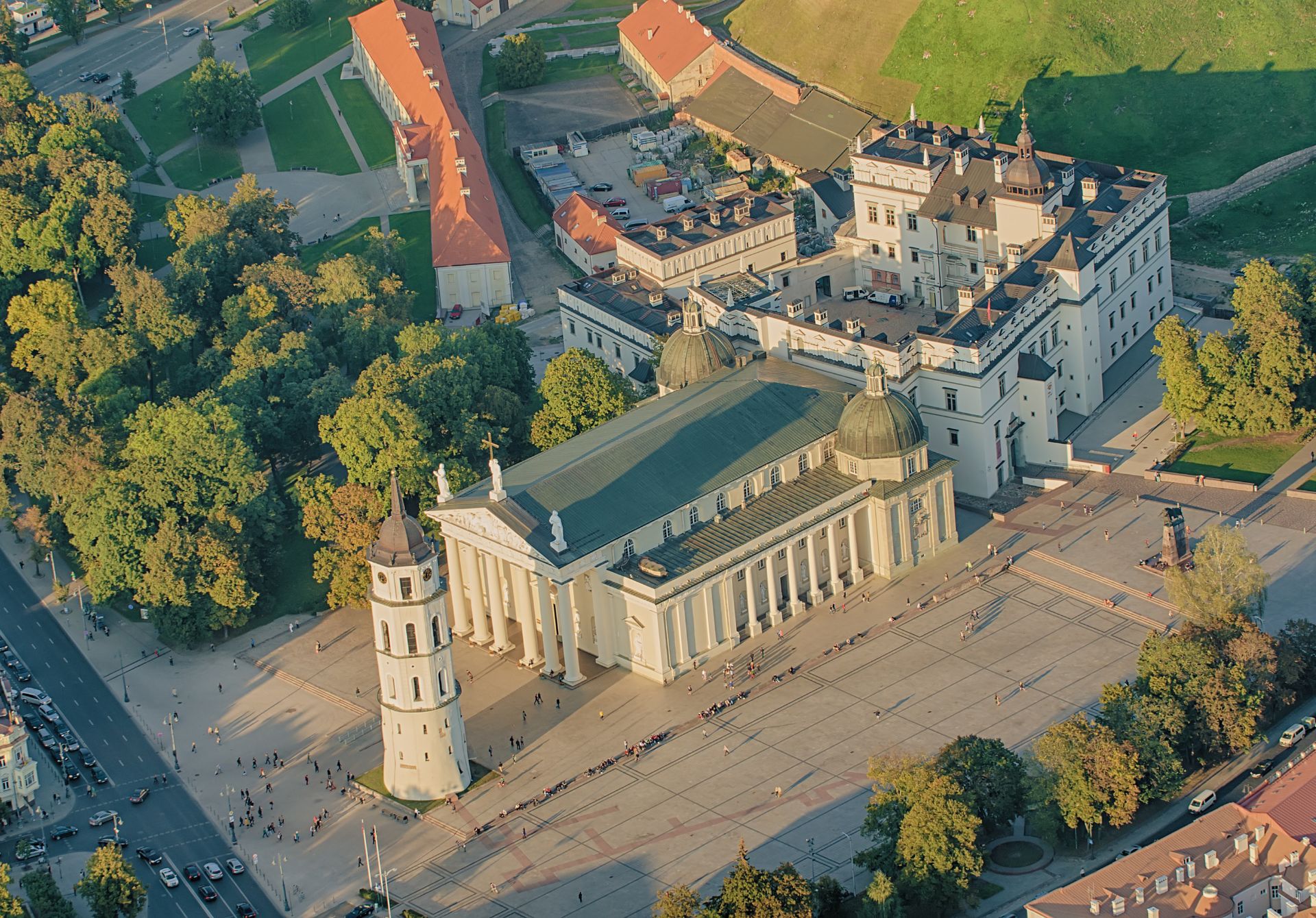Nestled in the heart of Vilnius, the capital city of Lithuania, stands a magnificent structure that embodies centuries of Lithuanian history and culture – the Palace of the Grand Dukes of Lithuania. This architectural marvel, with its rich past and recent rebirth, serves as a testament to the enduring spirit of the Lithuanian people and their commitment to preserving their heritage.
Historical Background
The origins of the Palace of the Grand Dukes can be traced back to the 13th century when the first wooden fortifications were erected on the site. Over the centuries, it evolved into a grand stone palace that served as the political, administrative, and cultural center of the Grand Duchy of Lithuania.
During its heyday in the 15th and 16th centuries, the palace witnessed the reign of some of Lithuania’s most prominent rulers, including Gediminas, Vytautas the Great, and Sigismund Augustus. It was within these walls that pivotal decisions shaping the course of Eastern European history were made.
Architectural Evolution
The palace underwent several phases of construction and renovation, reflecting the changing architectural styles of Europe. Initially built in the Gothic style, it later incorporated Renaissance and early Baroque elements. The result was a unique blend of architectural traditions that made the palace a true gem of Lithuanian cultural heritage.
At its peak, the palace complex covered an area of about 10,000 square meters and featured four wings surrounding an inner courtyard. The eastern and southern wings were the most impressive, housing the grand ducal apartments, throne rooms, and treasury.
Decline and Destruction
The palace’s glory was short-lived. Following the partition of the Polish-Lithuanian Commonwealth in the late 18th century, the palace fell into disrepair. The final blow came during the Tsarist occupation when the damaged structure was demolished in 1801, erasing a significant piece of Lithuanian history from the Vilnius skyline.
Resurrection of a National Symbol
For nearly two centuries, the palace existed only in historical records and the collective memory of the Lithuanian people. However, following Lithuania’s independence in 1990, calls for the palace’s reconstruction gained momentum. In 2002, after extensive archaeological research and heated debates, the Lithuanian government approved the ambitious project to rebuild the Palace of the Grand Dukes.
The reconstruction, based on historical, iconographic, and archaeological evidence, aimed to recreate the palace as it appeared in the 16th century. This monumental undertaking, costing over 100 million euros, involved not just rebuilding the structure but also recreating the interiors and collecting period furnishings and artworks.
The Reborn Palace: A Museum Complex
On July 6, 2009, to mark the 1000th anniversary of Lithuania’s name in written records, the reconstructed Palace of the Grand Dukes was officially opened to the public. Today, it functions as a national museum, offering visitors a journey through Lithuania’s rich history.
The museum complex is divided into four tour routes:
- The historical and architectural development of the palace
- The palace’s interiors from the 15th to the 17th centuries
- The Lithuanian rulers’ lives and state ceremonies
- Weaponry and armor from the 15th to the 17th centuries
These exhibits showcase over 300,000 artifacts discovered during archaeological excavations, providing tangible links to Lithuania’s past. The reconstructed ceremonial halls, with their period furniture and tapestries, offer visitors a glimpse into the opulent life of the grand dukes.
Cultural Significance and Controversies
The reconstruction of the Palace of the Grand Dukes has not been without controversy. Critics argued that the project was too costly and that the money could have been better spent on other cultural initiatives. Some historians and architects also questioned the accuracy of the reconstruction, given the limited historical evidence available.
Despite these debates, the palace has undeniably become a powerful symbol of Lithuanian national identity and resilience. It serves as a bridge between Lithuania’s glorious past and its aspirations for the future, attracting over 250,000 visitors annually.
Educational and Cultural Hub
Beyond its role as a museum, the Palace of the Grand Dukes has emerged as a vibrant cultural and educational center. It regularly hosts concerts, theatrical performances, and educational programs, bringing history to life for visitors of all ages.
The palace’s educational initiatives are particularly noteworthy. Interactive exhibits and workshops allow school children and adults alike to engage with Lithuanian history in meaningful ways. For instance, the “Live History” program enables visitors to try on replicas of historical costumes and participate in medieval craft workshops.
The Palace of the Grand Dukes of Lithuania stands as a powerful testament to the enduring spirit of the Lithuanian people. Its journey from medieval fortress to ruined memory and finally to restored national treasure mirrors Lithuania’s own path through history. Today, it serves not just as a monument to the past but as a living, breathing cultural institution that continues to shape Lithuania’s national narrative.
As visitors walk through its halls, they are not merely observing history; they are participating in the ongoing story of Lithuanian identity and cultural preservation. The palace’s resurrection from the ashes of history sends a powerful message about the importance of cultural heritage in forging national identity and pride.
In an era of rapid globalization, the Palace of the Grand Dukes reminds us of the value of preserving and celebrating our unique cultural legacies. It stands as an inspiration not just for Lithuanians, but for people around the world who seek to connect with their roots and keep their history alive for future generations.

